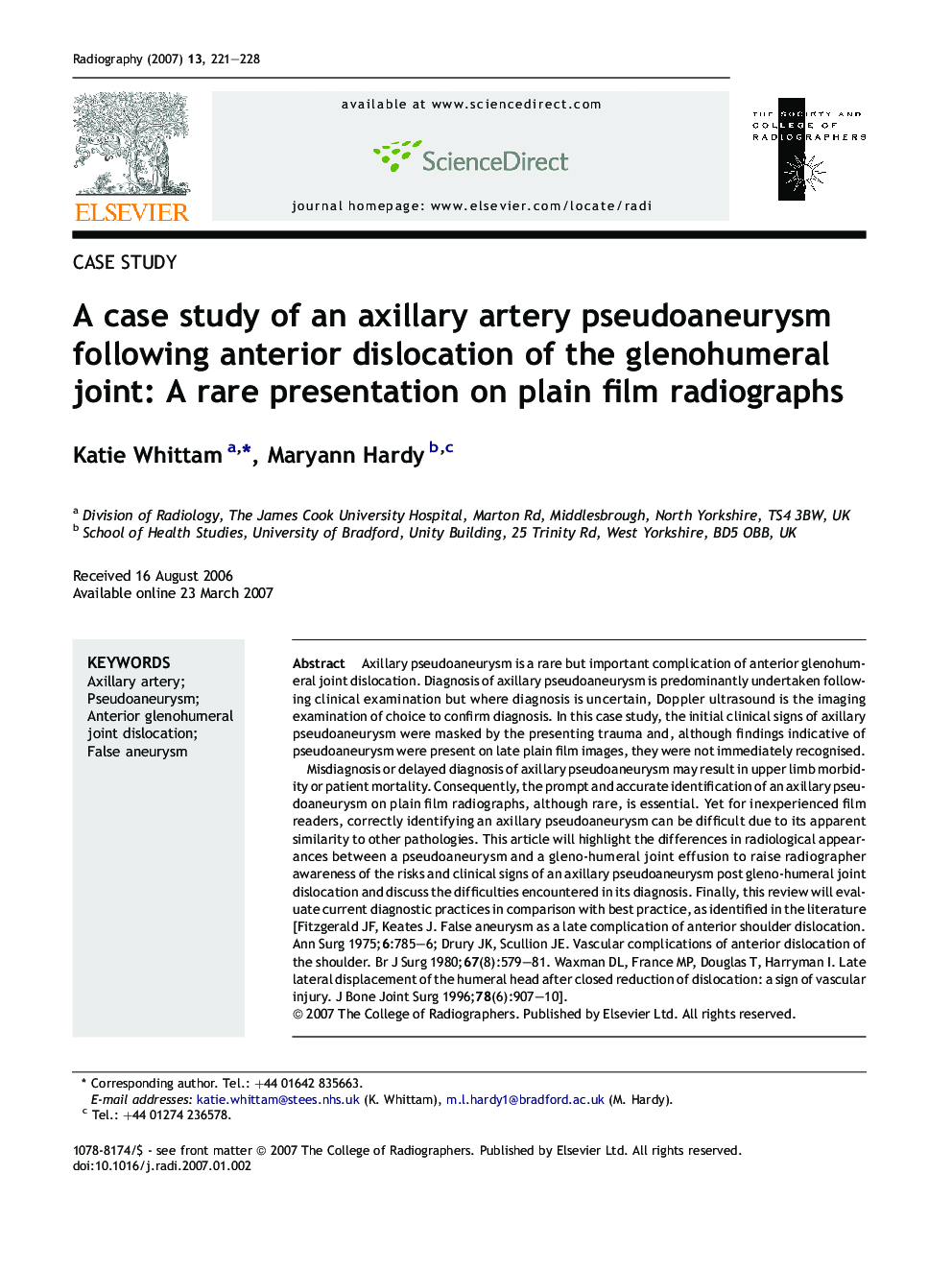| Article ID | Journal | Published Year | Pages | File Type |
|---|---|---|---|---|
| 2735180 | Radiography | 2007 | 8 Pages |
Axillary pseudoaneurysm is a rare but important complication of anterior glenohumeral joint dislocation. Diagnosis of axillary pseudoaneurysm is predominantly undertaken following clinical examination but where diagnosis is uncertain, Doppler ultrasound is the imaging examination of choice to confirm diagnosis. In this case study, the initial clinical signs of axillary pseudoaneurysm were masked by the presenting trauma and, although findings indicative of pseudoaneurysm were present on late plain film images, they were not immediately recognised.Misdiagnosis or delayed diagnosis of axillary pseudoaneurysm may result in upper limb morbidity or patient mortality. Consequently, the prompt and accurate identification of an axillary pseudoaneurysm on plain film radiographs, although rare, is essential. Yet for inexperienced film readers, correctly identifying an axillary pseudoaneurysm can be difficult due to its apparent similarity to other pathologies. This article will highlight the differences in radiological appearances between a pseudoaneurysm and a gleno-humeral joint effusion to raise radiographer awareness of the risks and clinical signs of an axillary pseudoaneurysm post gleno-humeral joint dislocation and discuss the difficulties encountered in its diagnosis. Finally, this review will evaluate current diagnostic practices in comparison with best practice, as identified in the literature [Fitzgerald JF, Keates J. False aneurysm as a late complication of anterior shoulder dislocation. Ann Surg 1975;6:785–6; Drury JK, Scullion JE. Vascular complications of anterior dislocation of the shoulder. Br J Surg 1980;67(8):579–81. Waxman DL, France MP, Douglas T, Harryman I. Late lateral displacement of the humeral head after closed reduction of dislocation: a sign of vascular injury. J Bone Joint Surg 1996;78(6):907–10].
